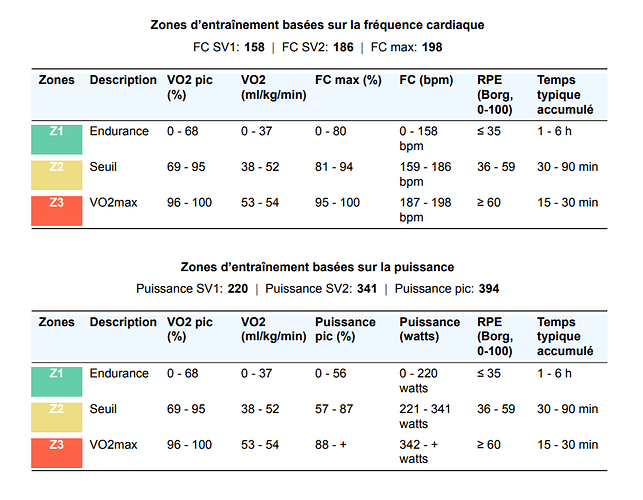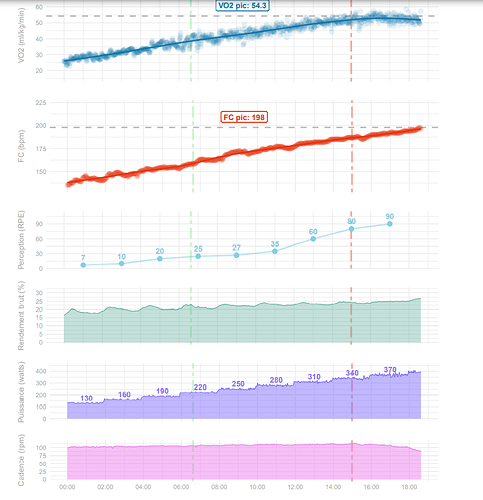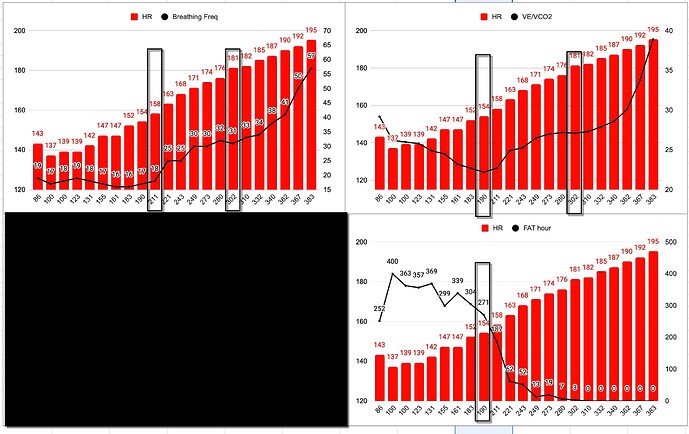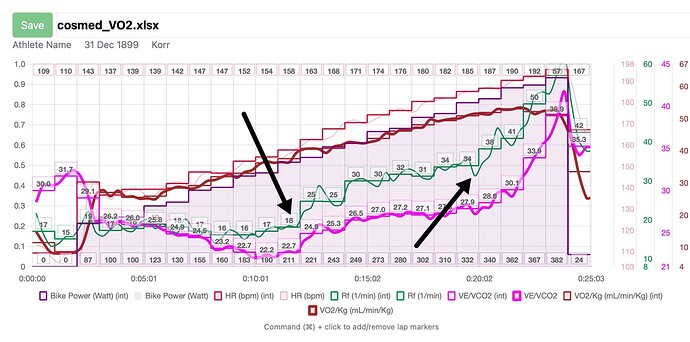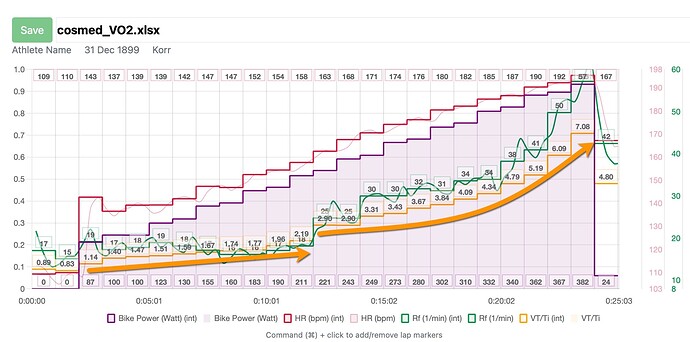Hello,
Just a few thoughts, could go really deep into this but would have to do that in a consult or privately.
Here is how I would look at the data.
I would put your Aerobic Threshold at 190 watts and 154 heart rate, so 190/383 49.6% of maximal aerobic power, 154/195 79% of max heart rate.
I would put your Threshold at 302-310 watts and 181-182 heart rate, so 302/383 79% or 310/383 81% of maximal aerobic power, 182/195 93% of max heart rate.
If I were to look at VT1 I would say 211 watts, VT2 332 watts using a 15s rolling average of the data.
I agree with every @SpareCycles has said.
I agree with @kjeldbontenbal that you were not warmed up.
@W_dufour were you fasted ? 4 Hours ? 12 Hours ? prior ? or not at all???
How do you find your energy in longer endurance rides 3-5 hours if you are doing any?
If I were to say something about what I see, the heart rates at the breakpoints are high, meaning that you could likely benefit from.
Below is your respiratory frequency and tidal volume.
Would really like to see a higher tidal volume and lower frequency much earlier in the test. This would also help take load off the heart rate.
The respiration rates aren’t too bad, but you could really improve depth of breathing. If you can do that I would expect to see heart rates about 10 beats lower, tidal volumes higher in a test a few months from now.
Just some thoughts keep up the good work some pretty solid numbers here.

